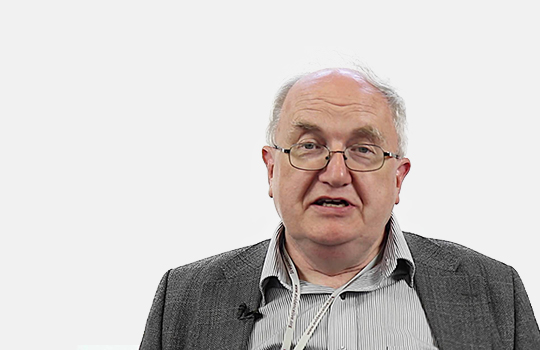Richard Lehman reviews the latest research in the top medical journals
 NEJM 20 July 2017 Vol 377
NEJM 20 July 2017 Vol 377
Idarucizumab
According to the Wikipedia article on the nomenclature of monoclonal antibodies, their names are supposed to give you a clue about the system they work on, as well as how they are manufactured. The clue for idarucizumab lies in the “ci,” which stands for circulation. That’s as close as it gets. It might be a mab that makes your toes warmer at night, or lowers your blood pressure, but in fact it’s the mab that reverses the anticoagulant effect of dabigatran. In two clinical trials it did just that, given at a dose of 5g. To give us a chance of remembering what it does, it should be renamed dabigatranumab. Boehringer Ingelheim ran the trials; and since they make a fortune out of selling dabigatran, I expect they’ll make this antidote available free of charge.
JAMA 18 July 2017 Vol 318
Vitamin D doses and URTI in kids
It’s become fashionable to scoff at the alleged non-skeletal benefits of vitamin D. Here’s a trial that compared doses of 400 IU or 2000 IU of oral vitamin D to see if the higher dose would reduce the incidence of upper respiratory tract infections in preschool children during the winter months in Canada. Scoffers, rejoice: the high dose made no difference.
Weight gain before 55 and healthy ageing in health professionals
Healthy ageing is not something that doctors know a lot about, as we generally only look after the unhealthy. In an analysis of follow-up data from those two familiar American cohorts, the Nurses’ Health Study (female only, begun in 1976) and the Health Professionals’ Study (all male, begun in 1986), healthy ageing is defined as being free of 11 chronic diseases and major cognitive or physical impairment. My guess is that most nurses and health professionals gain a bit of weight between the ages of about 20 and 55. And such people fare much the same as those who manage to stay the same weight. “Among those who gained a moderate amount of weight, 3651 women (24%) and 2405 men (37%) achieved the composite healthy aging outcome. Among those who maintained a stable weight, 1528 women (27%) and 989 men (39%) achieved the composite healthy aging outcome.” Oh but you must not be so complacent, says the last of the Key Points: “Among women and men, moderate weight gain from early to middle adulthood was associated with significantly increased risk of major chronic diseases and mortality.” Significant? A 2-3% associational risk difference for an individual?
JAMA Intern Med July 2017
Vasectomy & prostate cancer
The first time I can remember thinking about risk and individuals in relation to medical choices was in 1973, when I was a student with a very old school urologist. A study had just appeared linking vasectomy with an increased risk of prostate cancer. I asked him if he did vasectomies and how he might discuss this with patients. He said it was not a very popular procedure among normal chaps but attracted certain sorts of Guardian readers, teachers, and social workers. He would tell them to read up about it and make up their own minds. As far as he was concerned, the risk seemed small and was uncertain for any individual. Setting aside his remarks about Guardian reading etc, I think time has proved him right. It’s our job to encourage educated people to do their own reading about elective surgery before they submit to it, and to weigh the pros and cons in the light of their own preferences—and we need to help the less educated to do it as well. As for the observed association between prostate cancer and vasectomy, this is largely or wholly artefactual, according to this new systematic review and meta-analysis of the observational evidence: so we can add that to the decision aid.
The Lancet 22 July 2017 Vol 390
Progress in evidence based medicine
“Evidence based medicine” was a term that got up a lot of doctors’ noses from the moment it was first coined. I myself experienced some nasal symptoms in the early 1990s before settling down to the view that it must be a good thing if it reduced the opinionated arrogance of the medical expert class. But its limitations were clear from the start. The evidence available is often a poor fit for the evidence that is needed to guide the treatment of individuals. This creates the temptation to label patients in order to fit the evidence. The more you synthesise the evidence, the more you lose the detail and context. EBM guidelines often try to domineer the territory of illness and human life like a series of Roman roads, going from one fortress of knowledge in a straight line to the next, ignoring the native people and the messy contours of the land between. Here two leading proponents, including the inventor of the term, Gordon Guyatt, sum up its achievements over the past 25 years. I am glad that they have embraced the crucial role of patient values and preferences in clinical decision making—even to the point of claiming it was there from the start. And if, as they affirm, this is the major challenge for the future of medicine, then perhaps the term “evidence based medicine” should be replaced by “shared understanding of medicine.” If nothing else, it produces a better acronym.
Procalcitonin and antibiotics in neonates
“In high-income countries, between 4.0–7.4% of term and late-preterm neonates are given intravenous antibiotics within the first 3 days of life if they are suspected to have early-onset sepsis. However, the prevalence of culture-proven early-onset sepsis is less than 0.1%.” I think the “if” in the first sentence should really read “because.” Otherwise, it would mean that only 4–7.4% of babies with suspected sepsis are given antibiotics. Anyway, it seems clear that way too many neonates get antibiotics. Enter the magic test that reduces antibiotic prescribing: procalcitonin. Here’s a big (n=1710) multinational trial of procalcitonin guided decision making about antibiotics for suspected neonatal sepsis. It’s still too small to answer the main safety question: “Procalcitonin-guided decision making was superior to standard care in reducing antibiotic therapy in neonates with suspected early-onset sepsis. Non-inferiority for re-infection or death could not be shown due to the low occurrence of re-infections and absence of study-related death.” Well, I guess that is actually a good thing.
Voretigene neparvovec
Voretigene neparvovec
The silliest drug name yet, by heck.
Otherwise known as AAV2-hRPE65v2.
And if you ask what it might do
And blink.
“Telemedicine” for IBD management
We’re still in the early stages of discovering how the information revolution can work in both directions for the benefit of patients. It’s taking a long time to determine what information from them helps us, and what information from us helps them. Or when and how. Generally speaking, “less is more,” as illustrated by this Dutch trial of a system whereby patients aged 18-75 with inflammatory bowel disease reported their symptoms (nothing else) once a month to the specialist clinic and were fed back advice on how to manage them, and whether to report in more frequently, or less. At 12 months, there was no difference between the intervention (called myIBDcoach) and usual care for patient satisfaction, mean numbers of flares, corticosteroid courses, emergency visits, and need for surgical intervention. But the myIBDcoach group had fewer clinic visits or hospital admissions. I will call this frugal telemedicine, before anyone else does. That way it will annoy me less.
The BMJ 22 July 2017 Vol 358
Antidepressants in pregnancy and autism
In Europe, 3-8% of pregnant women are prescribed antidepressants during pregnancy. It has been suggested that this may be associated with a greater risk of autistic spectrum disorder in their children, and this is confirmed in a population study in Stockholm County. The investigators sought to reduce confounding by comparing antidepressant use in fathers, and comparing the rate in mothers taking antidepressants with that in mothers with other psychiatric disorders. I really like their cautious reporting: “The association between antidepressant use during pregnancy and autism, particularly autism without intellectual disability, might not solely be a byproduct of confounding . . . Importantly, the absolute risk of autism was small, and, hypothetically, if no pregnant women took antidepressants, the number of cases that could potentially be prevented would be small.”
What is this actually about?
Whenever I read a trial of a complex intervention, I go straight to the methods section to see what was actually done to the participants. On rare and beautiful occasions it is clearly described. Frequently, I’m given a link to a description in an earlier paper. Often I give up after several struggles with meaningless verbiage. As for the comparator, it’s almost always “usual care”—something that varies hugely from place to place. I’m so glad that Tammy Hoffmann has applied her clear brain to these muddles. She and her colleagues suggest a list of solutions to help systematic reviewers in the future. We must hope. We cannot live without hope.
Plant of the Week: Alcea rosea
The loveliest hollyhock I ever saw grew in asphalt at the base of a wall by the broken down garages of a sink estate where I was making a house call one hot weekend afternoon. It was healthy, happy, and beautiful in a place where it could get only the meanest amount of nutrition or water. Combining apricot, palest green, and a fudge brown in flowers of the subtlest beauty, its exact likeness will never be seen again. In nature, hollyhocks are promiscuous and produce children of infinite variety.
One of the great pleasures of late summer is to drive through small towns and villages where hollyhocks abound, to pick out the most adorable outliers. Woodstock in Oxfordshire, for example, currently revels in pinks and purples of no great distinction, but here and there are indescribable pastel yellows and white veined with green, and natural doubles of darkest red and black.
Breeders can make hollyhocks come true from seed, but generally choose to sell the blowsiest combinations. The Chater hybrids, however, are mostly good. Proper gardeners take care to collect their own seed and carefully raise the seedlings by potting them on in the spring. We have never done that, but by importing grown hollyhocks over 20 years we’ve come to have a few that seed themselves, and by potting up the natural children and re-sitting them, we have become largely self-sufficient though not prolific. All of them get horrible leaf-rust, but many last three years or more. Part of the joy is to see what colours they come out in. Disappointment is rare.
